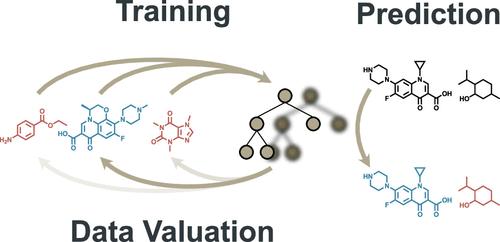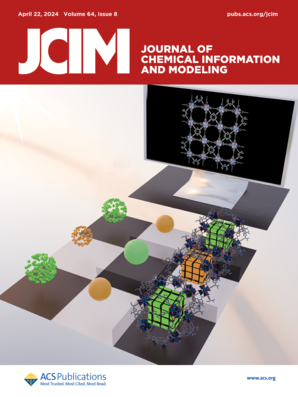机器学习驱动数据评估,优化高通量筛选流水线
IF 5.6
2区 化学
Q1 CHEMISTRY, MEDICINAL
引用次数: 0
摘要
在飞速发展的药物发现领域,高通量筛选(HTS)对于确定生物活性化合物至关重要。本研究介绍了一种新颖的数据估值应用,即根据数据点的影响评估其重要性的概念,以增强药物发现管道。我们的方法提高了化合物库筛选的主动学习能力,能稳健地识别 HTS 数据中的真阳性和假阳性,并能在不平衡的 HTS 训练中识别重要的非活性样本,同时兼顾计算效率。我们证明了基于重要性的方法能更有效地进行批量筛选,从而减少对大量 HTS 的需求。机器学习模型能准确区分真正的生物活性和检测假象,从而简化药物发现过程。此外,重要性欠采样有助于 HTS 数据集的平衡,在提高机器学习性能的同时不会遗漏关键的非活性样本。这些进步可以大大提高药物开发的效率和准确性。本文章由计算机程序翻译,如有差异,请以英文原文为准。

Machine Learning-Driven Data Valuation for Optimizing High-Throughput Screening Pipelines
In the rapidly evolving field of drug discovery, high-throughput screening (HTS) is essential for identifying bioactive compounds. This study introduces a novel application of data valuation, a concept for evaluating the importance of data points based on their impact, to enhance drug discovery pipelines. Our approach improves active learning for compound library screening, robustly identifies true and false positives in HTS data, and identifies important inactive samples in an imbalanced HTS training, all while accounting for computational efficiency. We demonstrate that importance-based methods enable more effective batch screening, reducing the need for extensive HTS. Machine learning models accurately differentiate true biological activity from assay artifacts, streamlining the drug discovery process. Additionally, importance undersampling aids in HTS data set balancing, improving machine learning performance without omitting crucial inactive samples. These advancements could significantly enhance the efficiency and accuracy of drug development.
求助全文
通过发布文献求助,成功后即可免费获取论文全文。
去求助
来源期刊
CiteScore
9.80
自引率
10.70%
发文量
529
审稿时长
1.4 months
期刊介绍:
The Journal of Chemical Information and Modeling publishes papers reporting new methodology and/or important applications in the fields of chemical informatics and molecular modeling. Specific topics include the representation and computer-based searching of chemical databases, molecular modeling, computer-aided molecular design of new materials, catalysts, or ligands, development of new computational methods or efficient algorithms for chemical software, and biopharmaceutical chemistry including analyses of biological activity and other issues related to drug discovery.
Astute chemists, computer scientists, and information specialists look to this monthly’s insightful research studies, programming innovations, and software reviews to keep current with advances in this integral, multidisciplinary field.
As a subscriber you’ll stay abreast of database search systems, use of graph theory in chemical problems, substructure search systems, pattern recognition and clustering, analysis of chemical and physical data, molecular modeling, graphics and natural language interfaces, bibliometric and citation analysis, and synthesis design and reactions databases.

 求助内容:
求助内容: 应助结果提醒方式:
应助结果提醒方式:


